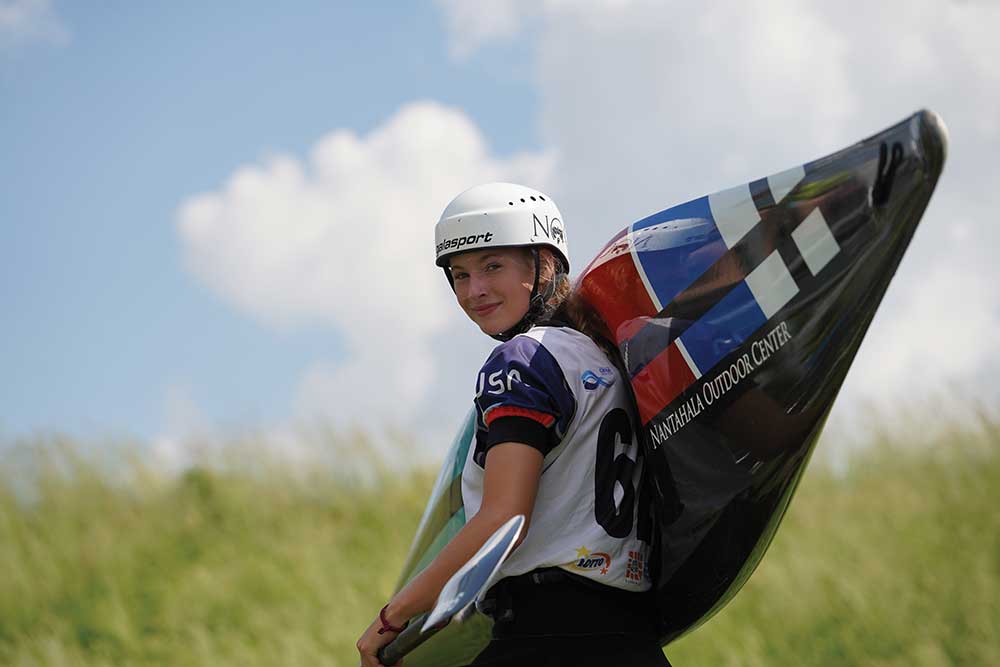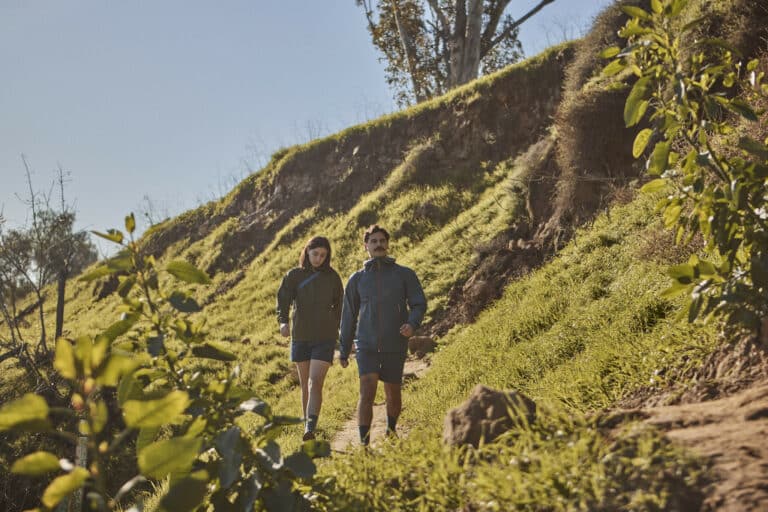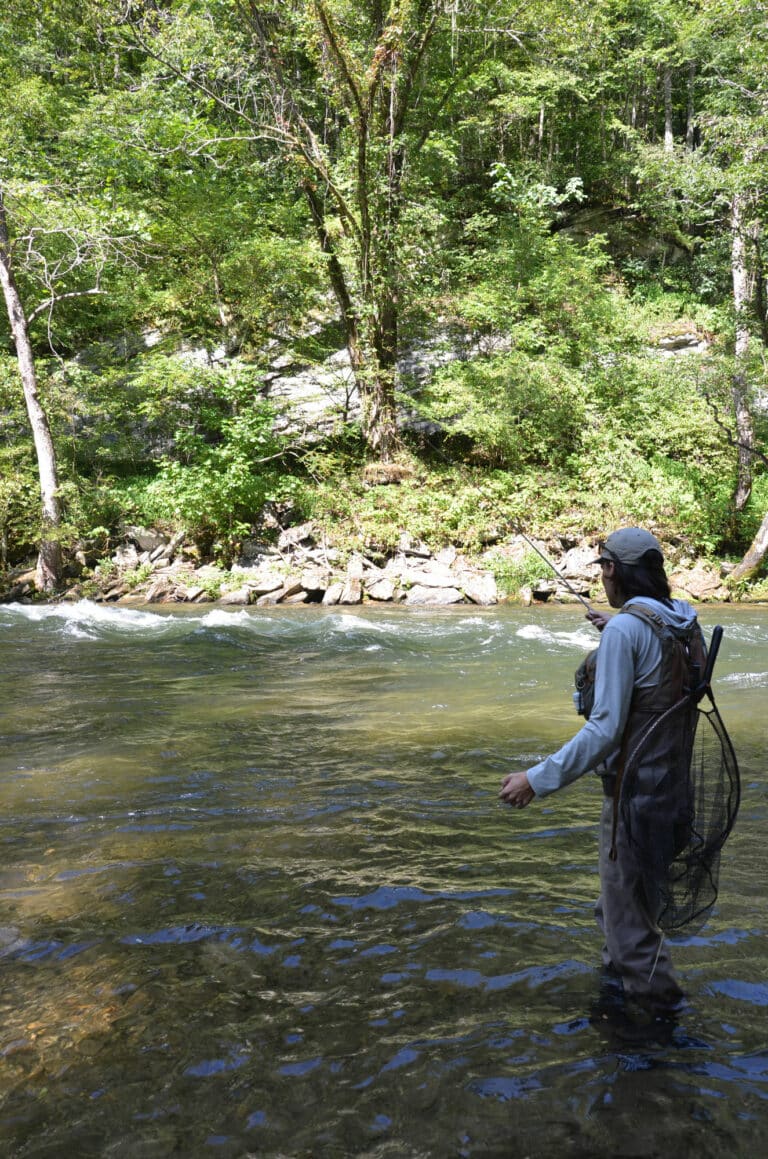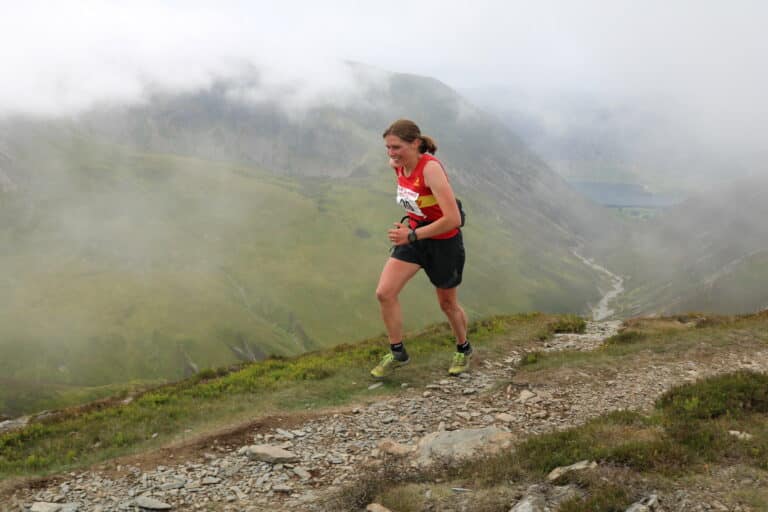photo by Jean Folger
NRC Paddler Evy Leibfarth Eyes Olympic gold
As a teenager competing against mostly adult athletes, Evy Leibfarth is making waves in the paddling community. After taking the gold medal in the Women’s Canoe Slalom at this summer’s Pan-American games in Peru, Leibfarth is looking ahead to the 2020 Olympic Games in Tokyo.
Leibfarth, 15, grew up in Bryson City, North Carolina. At age four, she got involved with the Nantahala Racing Club because her father, paddler Lee Leibfarth, was a volunteer coach for the Kid’s Club.
“I practically grew up at the Nantahala Outdoor Center,” she said. “I would spend hours there playing in the water, watching the paddlers, and hoping to be out there with them someday… Now, I try to help coach sessions when I’m home, and I hope to be one of the older athletes that kids look up to and train hard to beat.”
Leibfarth credits the NOC’s famous tater tots, which her father used as a reward when she mastered tough moves, as a major factor in her development as a paddler.
“Some challenges took me months to complete, but it certainly was good for motivating me when I was little,” she said.
BRO sat down with Leibfarth to talk about her recent win and plans for the future.
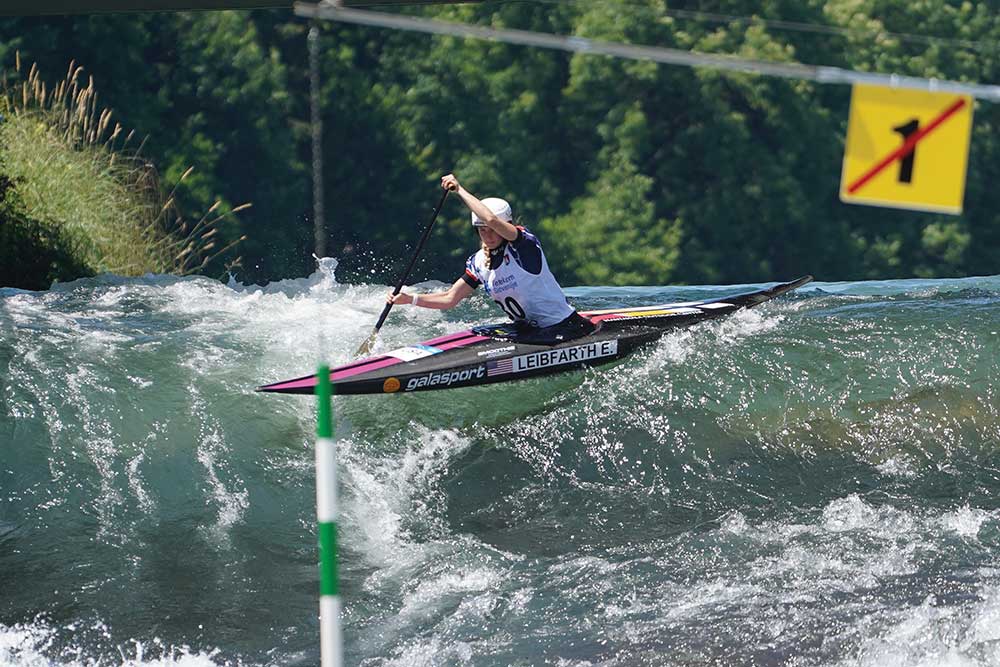
What are your earliest memories of being on the water and how did you realize this was a sport you wanted to pursue?
I remember when I was pretty young, maybe around five, I was paddling the Nantahala River and my dad wouldn’t let me run Nantahala Falls until I got my roll. I started crying, and everyone thought that I was scared—but I wasn’t, I was just frustrated. But I finally got my roll and was able to run the rapid.
Later, while watching canoe slalom at the 2012 Olympics, my dad planted the seed in my head that I would have to decide how serious I was about slalom after the next quad. And I did decide I really wanted to pursue the sport after paddling at the 2016 Olympic trials and truly realizing how much I loved the competition environment. Even though I had been training a lot before, that’s when I really decided to get serious.
Both of your parents are accomplished paddlers. How did they influence your athletic career? What is it like working with your dad as a coach and a parent?
Having my dad as my coach is really incredible. Because he knows me so well, he knows how to encourage me and push me to do well, while keeping the sport fun for me. Even before I started training slalom, having athletic parents helped me develop good activity and nutrition habits early, which is huge. Also, because my parents often travel with me, it makes it easier to be away from home for long periods of time for races and training camps.
What kinds of things do you do to train on and off the water?
Off the water, I do strength training at a gymnastics gym and focus mainly on just body weight exercises. Also, to improve my aerobic capacity (which is what’s needed to paddle hard all the way to the end of a 100-second course), I like to mountain bike and run. On the water, I do mostly technique workouts with video review afterwards, as well as longer courses and race simulation to improve my anaerobic endurance. A challenge of slalom is being balanced and precise while trying to go as fast as possible, so not having to focus on being out of breath or being really tired at the bottom of the course is important.
You compete in both slalom canoe and kayak. What are some of the differences between the two events?
In slalom canoe, I am on my knees and using only one blade. It’s a lot harder to balance than a kayak, where you’re sitting down and using two blades. Because of this, though, it’s often harder to do well in kayak because the race times tend to be really close together, and there is less room for errors.
At the beginning of August, you won gold in the Pan-American games in Peru. What was it like competing on such a big international stage, and how is this helping you prepare to qualify for the 2020 Olympics?
All race experience that I get is helpful for qualifying for Tokyo. Learning how to mentally prepare for big events is such an important part of racing. This event is the first Games I attended, and I got to learn a lot about how to deal with stress, and also handle interviews and other media while still preparing for a race.
What are your future plans for your athletic career and life in general?
I definitely plan on training and competing in canoe slalom for a long time and competing in the 2028 Olympics in my home country is definitely something I’ll have my sights set on. I’d like to go to college while still training full-time after I graduate from high school, and I hope to become either a surgeon or graphic designer… two very different career paths.
Which are your favorite rivers to paddle, and where are some bucket list spots?
The Upper and Cascades sections of my home river, the Nantahala, along with the Cheoah, are my favorite natural places to paddle. Most canoe slalom venues are artificial, so my favorite training “rivers” are Penrith, Australia and Bratislava, Slovakia. A few spots on my bucket list are Okere Falls in New Zealand and the Futaleufu in Chile.
How has your paddling career influenced your relationship to environmental issues such as wastewater management and chemical runoff?
My paddling career has made me keenly aware of the many environmental issues that rivers are facing. Both nationally and internationally, much of the water I paddle on is polluted, and I am constantly brainstorming ways that I could help solve some pollution issues in the future. I recently took an environmental science course and did a project on wastewater management. Even small steps like placing nets where treated wastewater enters waterways can significantly improve river conditions. My favorite rivers to paddle on are those which haven’t been very influenced by human actions, and I hope those rivers such as the Cheoah can continue to be preserved for the next generation.
